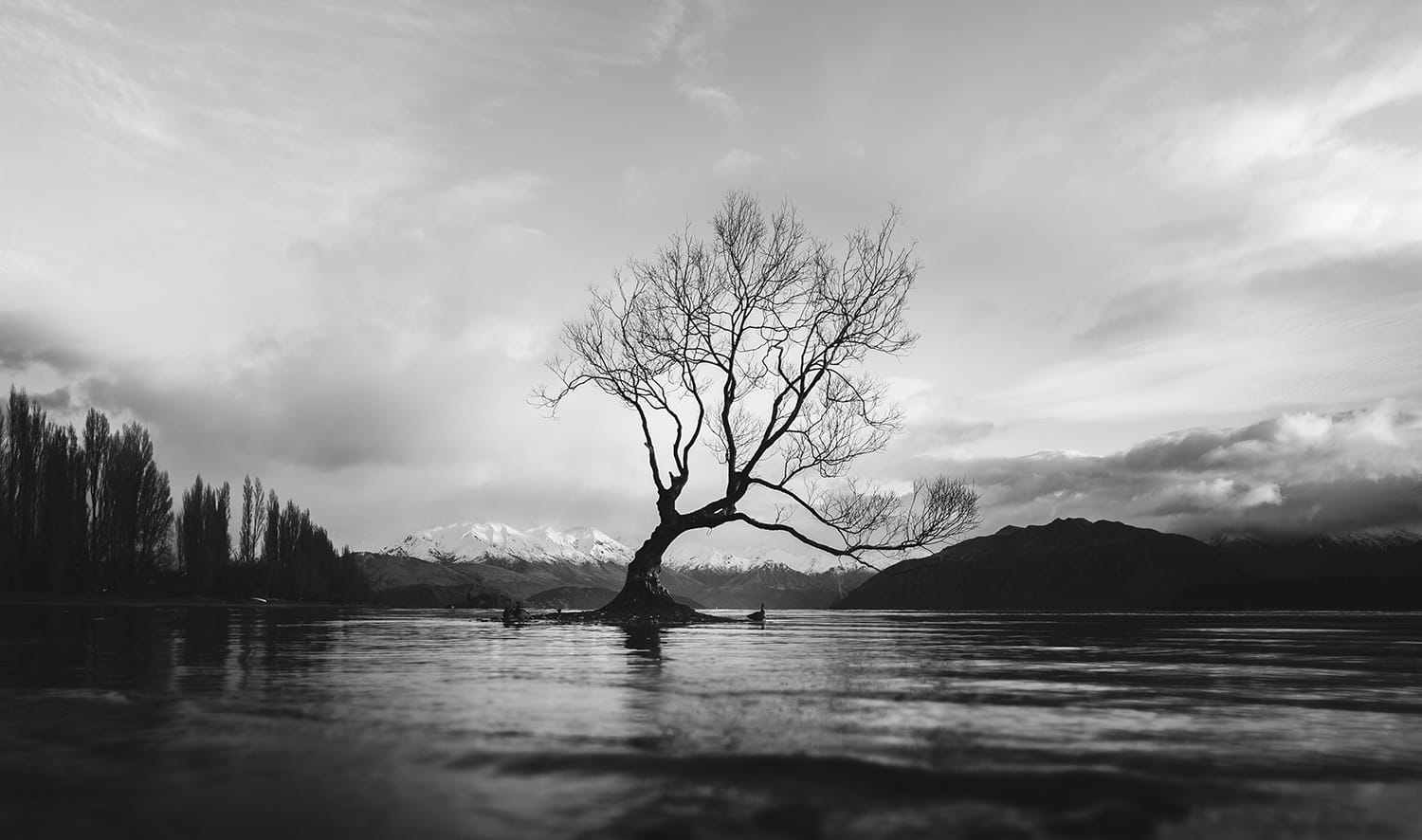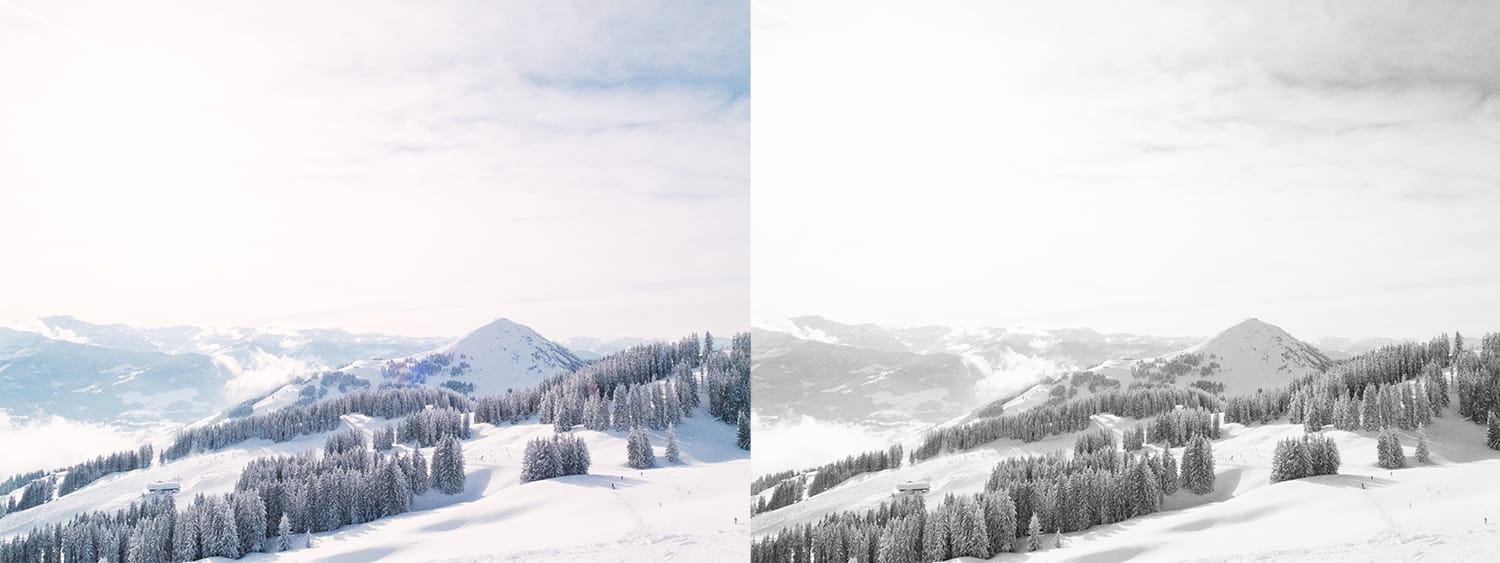Capturing Dramatic Black & Whites in the Winter
There’s a chill in the air – and frost in the morning! A heavy mist covers the ground. Winter is here; and it’s a great time of year for capturing some beautiful landscape images.
While the cold winter months bring their own set of challenges; for landscape photographers, it can also be a rewarding time of year. The winter light is fleeting but it’s also beautiful, especially in the morning hours. It’s also a change from the usual summertime images – as winter completely transforms the landscape with snow and frost, creating an icy windswept land.

One way to capture wintertime landscapes especially well is by creating black and white images. Good black and white photography isn’t just a way to hide difficult lighting conditions; it can also be an extremely effective way to capture the beauty of wintertime – helping you to create images that are striking, with an almost timeless appeal.
If you’d like to capture some exciting black and white images, winter is a great time for doing so! Here’s a look at a few tips that will help you to get started.

Learning to See in Black and White
Learning to see the world in black and white can be a challenge and it’s something that most photographers struggle with.
After all, doesn’t shooting in black and white limit you? Why would you ever want to shoot in black and white when there are so many vibrant colors out there? But far from limiting your options, the absence of color, in many ways, can strengthen your composition. Instead of using color, you’ll be forced to rely on other elements instead such as contrast, for example, or shape and form. Striping your image back to the basics is a bold approach, and without the distraction of color, your images’ composition will be able to shine.
Of course, shooting in black and white isn’t just about switching your camera’s mode or hitting a button in Lightroom. Successful black and white photography is about learning to create powerful compositions, ones that work well in black and white.
Now, let’s take a look at a few tips that can help you to create striking wintertime black and white images.
Look for Contrasting Tones
In a full-color photo, your eye would naturally be drawn to the brightest or boldest colors. But with black and white, contrast is what will grab your attention. When composing your images, look for contrasting tones that you can include in your images. For example, a dark subject – like the silhouette of a tree against an expanse of white snow, can make for a powerful composition.
Pay Attention to Shape and Form
With black and white photography, elements with a strong shape can really stand out. Look for striking subjects to include as focal points in your images. For example, the jagged ridge of a mountain range, a bridge, or a fence leading into a scene could work well as a black and white image.
During the winter, keep your eye open for opportunities to capture objects with unique shapes. The windswept, barren landscape can make a great backdrop for objects with a striking form.
Watch for Shadows
Shadows can make great features in black and white images as well. The dark contrast of the shadow against a lighter background means that the shadows will almost take on a life of their own, serving as a point of interest in an image.

Try to Capture Mist
The early morning mist that’s often found during the colder months of winter can make for a great black and white composition. Of course, morning is generally the best time to capture mist. So you’ll want to plan ahead if you’re looking for foggy morning captures. Keep in mind too that smoke has a similar effect as well.
Consider a Long Exposure
If you’re photographing the sea, a waterfall, river, or clouds consider using a long exposure for your black and white images! Long exposures often work great in black and white especially when there are some strong contrasting elements in the scene to help anchor the composition. Just remember to bring your tripod to steady your camera and prevent camera shake.

Get Creative
When it comes to capturing wintertime black and white photography, it pays to be creative. Try to think outside the box, and look for opportunities to create some unique images. Pay attention to the time of day, the lighting, and weather, and look for your chance to create a great shot.
Are there dramatic clouds in the sky? Try using a polarizer and capturing it as a black and white image. Is there a beautiful morning mist over the winter pond? That would also make a great black and white!
Consider Post-Processing
Finally, black and white images can almost always benefit from some level of post-processing. And of course, if you’re shooting in RAW, you’ll need to adjust them in post-processing anyway. Consider downloading some Lightroom presets – or adjusting the settings yourself to get the results that you’re looking for.
Keep in mind that even when you’re using a preset, you’ll still most likely want to make a few adjustments to get your image just right. With snow, you’ll usually need to lower the exposure just a bit.

Original and black and white · Image Source.
While it can be tricky to tell whether an image will work well in black and white, with practice, you’ll soon start to develop an eye for compositions that will work well in monochrome. In the meantime, keep in mind too, that some images that work well in color, will also look great in black and white! So consider going through your current images, and turning some of them into black and whites, just to get a feel for what works.
Who knows? You just might be surprised at how many great monochrome images you have already! Do you enjoy black and white photography? Let us know on Facebook or Twitter!
